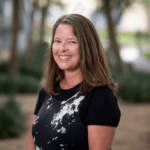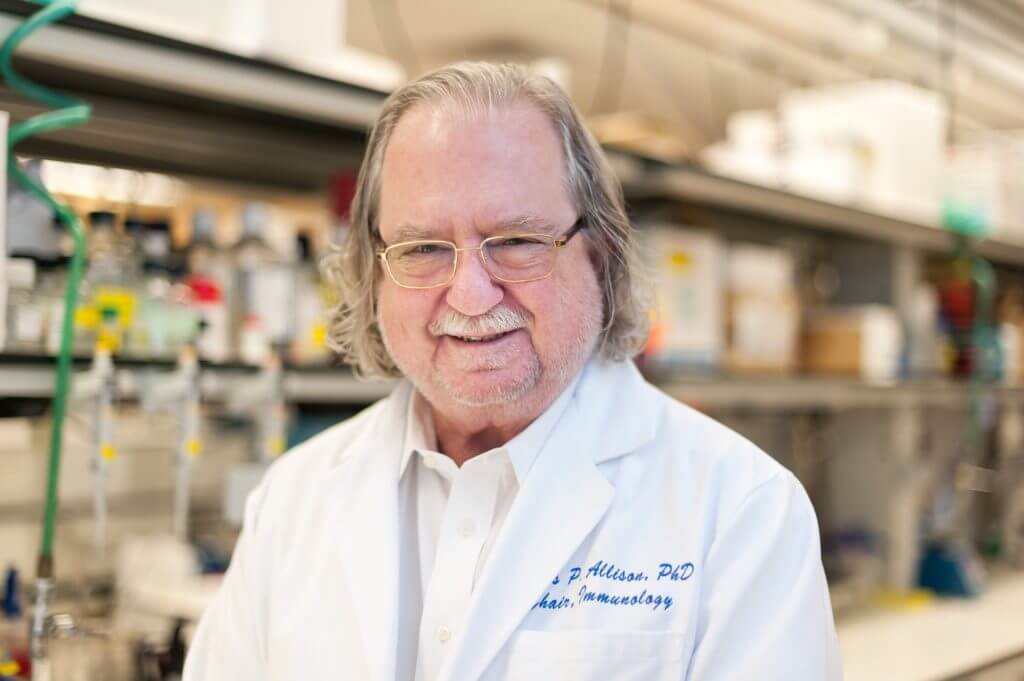Top Texas Medical Center news stories of 2019
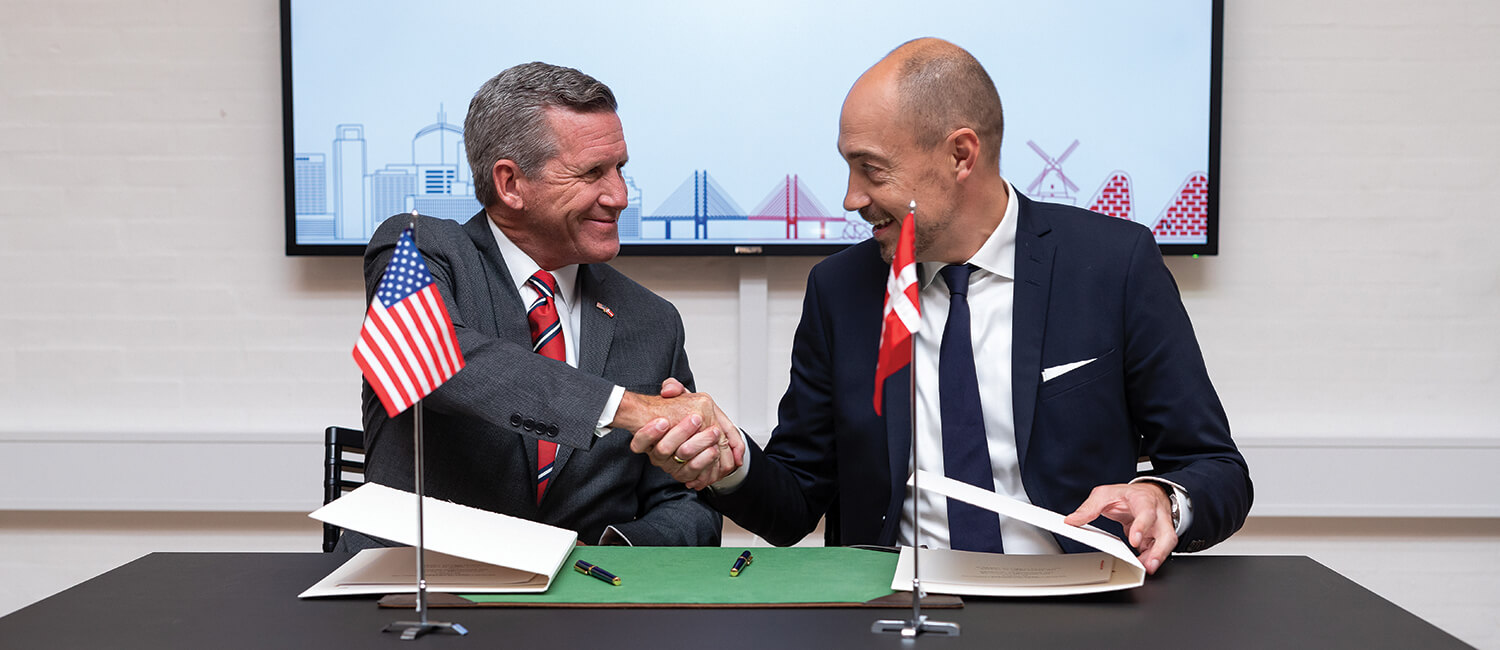
BAYLOR COLLEGE OF MEDICINE
Restored sight with a prosthesis
Researchers at Baylor College of Medicine brought partial sight to a handful of study participants who have been blind for years using Orion, a visual cortical prosthesis surgically implanted in the brain. The researchers bypass broken optical nerves and input visual information—seen by a camera that is part of the Orion device—directly into the brain. Patients who were previously unable to see no change in light or shades are able to identify white boxes shown on a monitor. Orion is being tested at Baylor as part of a collaboration with Second Sight Medical Products. Daniel Yoshor, M.D., chair and professor of neurosurgery at Baylor, is using the prosthesis to support research he has been working on for more than a decade, along with neuroscientists William Bosking, Ph.D., and Michael Beauchamp, Ph.D.
• • •
BAYLOR ST. LUKE’S MEDICAL CENTER
Elevated rankings
U.S. News and World Report’s 2019-2020 Best Hospital rankings ranked Baylor St. Luke’s Medical Center in four adult specialties. For neurology and neurosurgery, Baylor St. Luke’s was ranked 18th in the nation and at the top in Houston. Baylor St. Luke’s ranked 21st in cardiology and heart surgery and 22nd in gastroenterology and gastrointestinal surgery. The Dan L Duncan Comprehensive Cancer Center was ranked 36th for cancer care. CHI St. Luke’s Health is driven by its faith-based mission and strong alliance with its academic and community partners—Texas Heart Institute and Baylor College of Medicine—to improve the health of communities in Houston and across Texas.
• • •
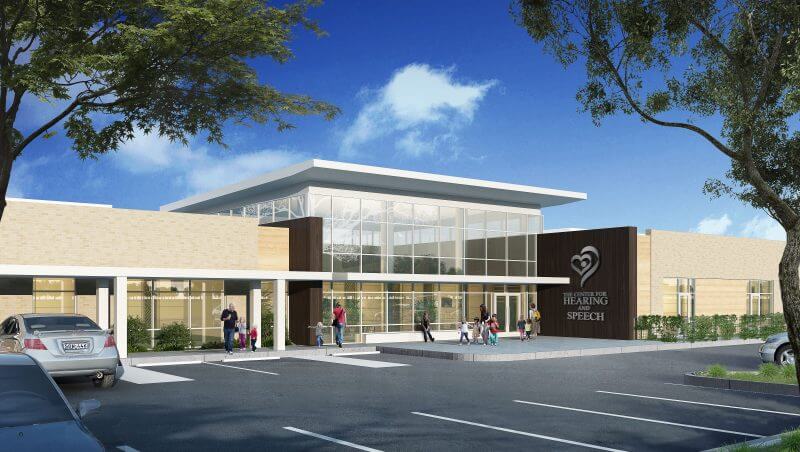
The Center for Hearing and Speech is building a new campus, shown in a rendering. (Credit: Courtesy photo)
THE CENTER FOR HEARING AND SPEECH
Broke ground on a new campus
The Center for Hearing and Speech broke ground on a new, 42,000-square-foot campus in the Texas Medical Center in 2019. The new facility, located near State Highway 288 and MacGregor Way, will dramatically increase the number of children the organization can serve. “It’s really exciting that we will finally have a facility that starts to match the passion and expertise that we have within our walls right now,” said Kyle Swift, CEO of The Center for Hearing and Speech. The new facility will offer innovative services and support for children with hearing loss.
• • •
GULF COAST REGIONAL BLOOD CENTER
Expanded cellular therapy services
Gulf Coast Regional Blood Center launched Cellular Life Solutions, a division of the organization dedicated to biotherapies. One of the challenges facing cell therapy companies is procuring a quality starting product. Cellular Life Solutions aims to help make the dream of new, cutting-edge blood and cell therapies a standard of care. Cellular Life Solutions’ highly trained nursing and medical personnel work with organizations worldwide to help provide autologous and allogeneic therapies for patients. The organization collects mononuclear cells, and these immune system cells are used for existing clinical trials, research and development, and/or protocol validation and training.
• • •
HARRIS COUNTY INSTITUTE OF FORENSIC SCIENCES
Launched new disaster assistance strategy
The Texas Mass Fatality Operations Response Team, or TMORT, began as an idea at Harris County Institute of Forensic Sciences (HCIFS) and has matured into a statewide strategy for providing medicolegal assistance to jurisdictions overwhelmed by disaster circumstances. TMORT deployed for the first time to assist in the response to the mass shooting in El Paso, Texas, on Aug. 3, 2019. Three HCIFS staff members helped examine and identify the deceased and manage associated evidence. TMORT is part of the broader Texas Emergency Medical Task Force, a group capable of providing scalable responses to medical disasters by rapidly activating members from unaffected EMS and fire departments, public and private health care organizations, universities, regional coalitions and state and local government—including private and county medical examiners’ offices.
• • •

The food “farmacy” at Strawberry Health Center in Pasadena is part of Harris Health System. (Credit: Felix Sanchez)
HARRIS HEALTH SYSTEM
Tackled food insecurity and diabetes with new program
A new program at Harris Health System called Population Health Transformation addresses the social and economic needs of patients— aside from providing medical care—through direct and collaborative intervention. Harris Health expanded its flourishing community farm at Lyndon B. Johnson Hospital this year; by next spring, the 1-acre farm should yield 500 pounds of produce for patients every week. Additionally, a food “farmacy” (mini grocery store) at Strawberry Health Center opened its aisles for patients with food insecurity and uncontrolled diabetes, a first-of-its-kind effort in partnership with Houston Food Bank. Patients are given a prescription for 30 pounds of food every two weeks to help them eat healthfully and manage disease. The successful program may be replicated at other Harris Health locations.
• • •
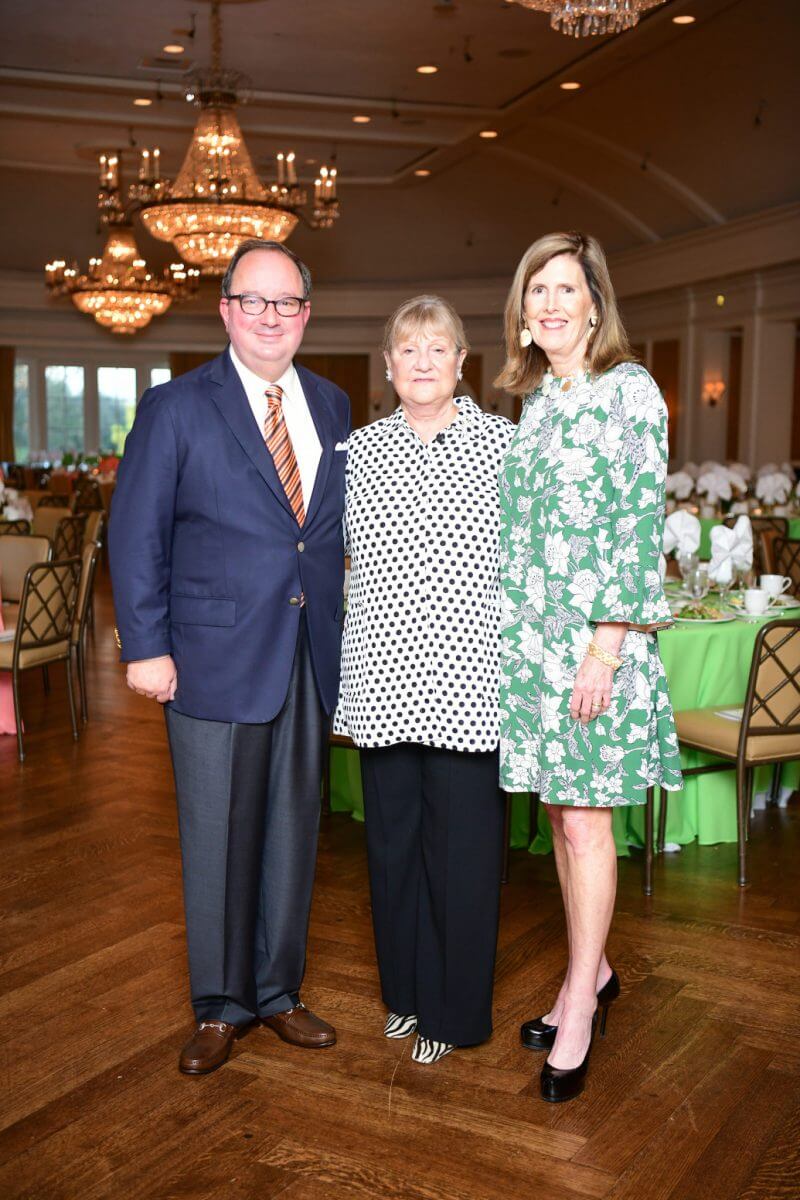
Nina Wickman is flanked by Chris and Vivie O’Sullivan at the Houston Hospice Spirit Award Dinner. (Credit: Courtesy photo)
HOUSTON HOSPICE
Presented Community Spirit Award
Nina Wickman received the 2019 Laura Lee Blanton Community Spirit Award at Houston Hospice’s annual Spirit Award Dinner on October 15, one of the organization’s most successful fundraising events. A former fundraiser for Houston Ballet, Wickman directed a $14 million capital campaign that financed the building of Houston Hospice’s current inpatient care center and chapel, and the renovation of offices located in Holcombe House.
• • •
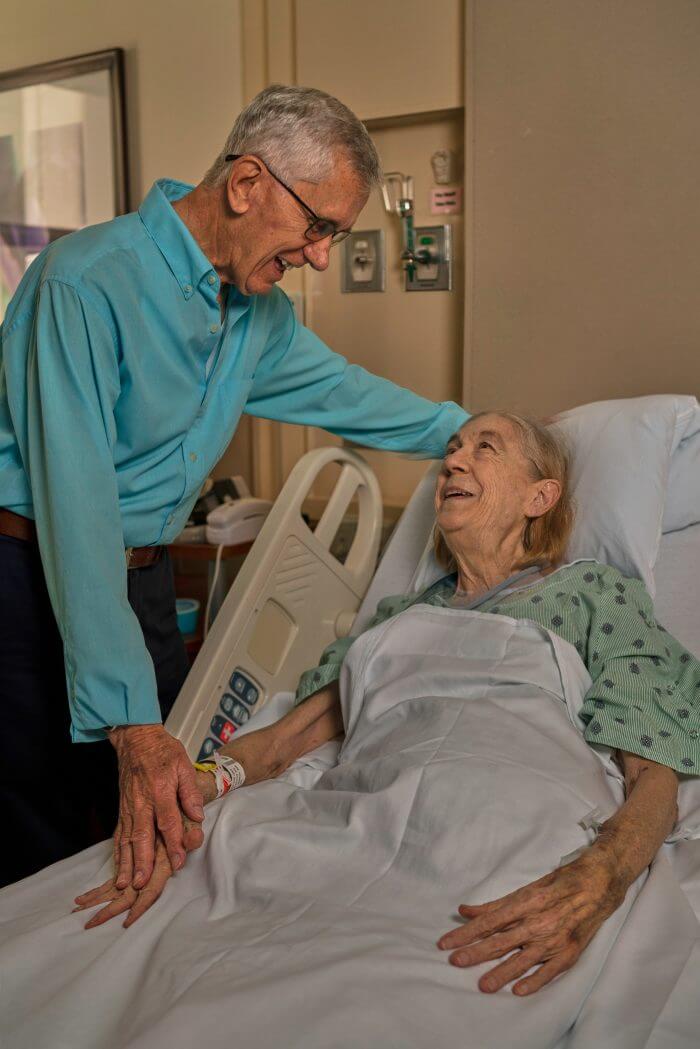
Frank Dewhurst visits Linda Nall at Houston Methodist Hospital. (Credit: Courtesy photo)
HOUSTON METHODIST HOSPITAL
Served oldest living kidney donor in United States
An 84-year-old Texas man became the oldest living kidney donor in the U.S. after donating to his 72-year-old neighbor at Houston Methodist Hospital. Frank Dewhurst knew Linda Nall’s kidneys were failing, but it wasn’t until he saw a sign in her front yard that he took action. The sign read ‘I am type O and I need a kidney transplant. Please help me.’ “So after talking it over with my wife,” Dewhurst said, “I told her she could have mine.” Nall was stunned when Dewhurst told her the news. “When he told me he wanted to give me his kidney, I was shocked,” Nall said. “I am going to make the most of Frank’s gift and live life to the fullest.” All patients receive a full work-up to make sure they are strong enough to donate, according to Houston Methodist nephrologist, Hassan Ibrahim, M.D. If everything checks out, there is no reason an older person cannot save some- one’s life.
• • •
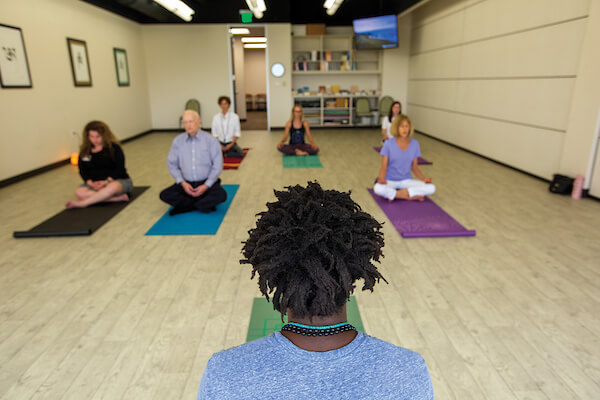
The Institute for Spirituality and Health offers a range of classes focused on mind-body medicine.
INSTITUTE FOR SPIRITUALITY AND HEALTH
Launched mind-body medicine degree programs
To meet the growing demand for integrative health and mind-body practices, the Institute for Spirituality and Health (ISH), in collaboration with Saybrook University, launched the first post-graduate programs in mind-body medicine in the Texas Medical Center. The inaugural cohort includes fifteen students, and registration has begun for 2020. The M.Sc. and Ph.D. degree programs prepare scholar- practitioners for a range of careers by exposing them to rigorous and cutting-edge research and mind-body modalities. The Institute has also established programs to disseminate mind-body practices to the general public. In the wake of Hurricane Harvey, ISH helped form and lead the Greater Houston Healing Collaborative, a psychosocial disaster response that has equipped 120 individuals to offer mind-body workshops to reduce post-traumatic stress. To date, these interventions have reached more than 10,000 individuals across Harris and surrounding counties.
• • •
JOHN P. McGOVERN MUSEUM OF HEALTH AND MEDICAL SCIENCE
Celebrated 50th anniversary
The Health Museum celebrated its first five decades as the only health museum of its kind in the United States. In 1962, the Harris County Medical Society (HCMS) and the Junior Chamber of Commerce sponsored the successful “Victory Over Polio” immunization campaign. Thanks to public donations from the campaign and from local physicians, along with support from Houston Endowment and HCMS, The Health Museum was launched on Nov. 16, 1969, as part of the Houston Museum of Natural Science. On March 16, 1996, after the successful completion of a $9.6 million capital campaign, the museum opened at its current location, 1515 Hermann Drive, in the Houston Museum District. The Health Museum is one of two Smithsonian Affiliate institutions in Houston.
• • •
LIFEGIFT
Offered HIV-positive patients HOPE
LifeGift was one of the first organ procurement organizations to participate in the HOPE (HIV Organ Policy Equity) Act research program in 2018, which allows HIV-positive people to donate their organs for research or transplantation into HIV-positive recipients. Under the HOPE Act, LifeGift has facilitated donations from 29 HIV-positive donors, 22 of whom donated organs for research. Twelve HIV-positive recipients received organs from seven donors, including eight kidney recipients, three liver recipients and one double lung recipient.
• • •
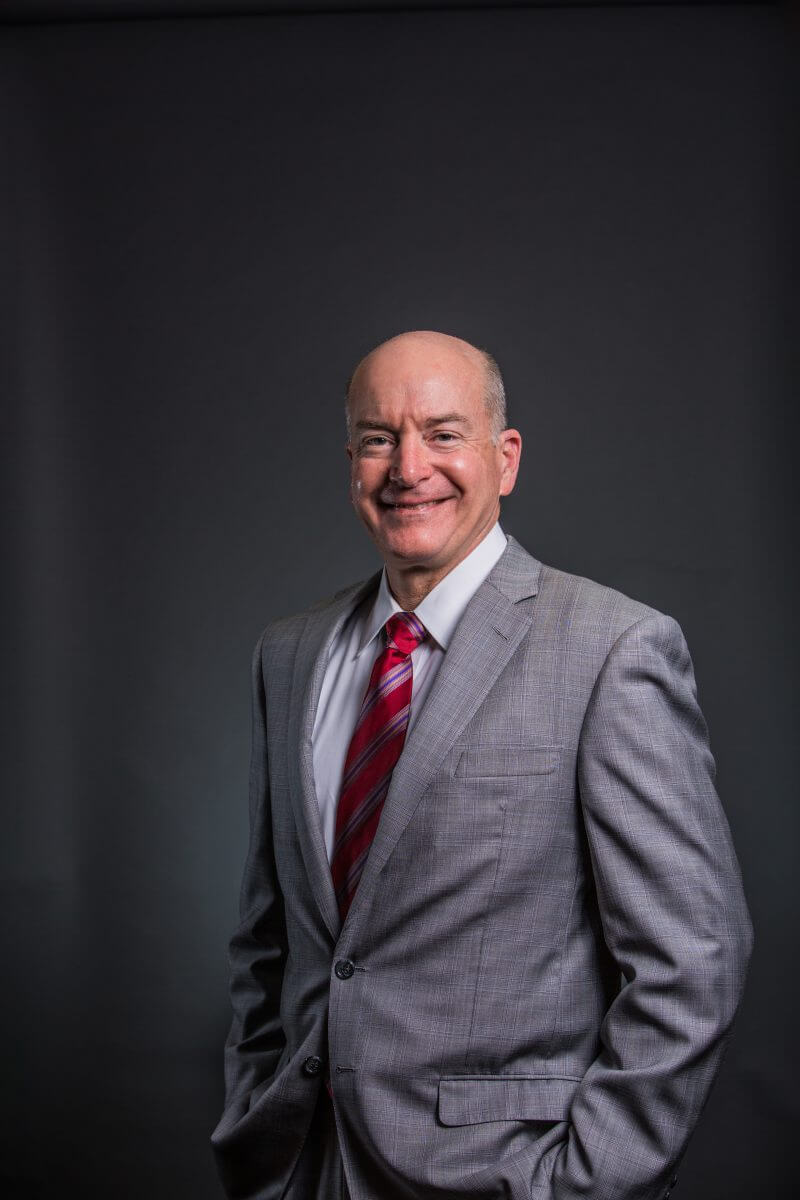
David Callender, M.D., was named the new president and CEO of Memorial Hermann Health System in 2019. (Photo: Courtesy photo)
MEMORIAL HERMANN HEALTH SYSTEM
Named new president and CEO
Following a nationwide search, Memorial Hermann Health System selected David L. Callender, M.D., as its new president and CEO. An accomplished physician executive with significant experience leading academic health systems, Callender has vowed to preserve and strengthen Memorial Hermann’s 113-year legacy of serving Greater Houston. “I have been inspired by Memorial Hermann’s efforts to bring value-based, more personalized care to our communities,” Callender said, “and I’m excited and honored to now help lead the way as we work to extend those efforts by delivering exceptional patient experiences and improving outcomes for all.” Callender succeeds Chuck Stokes, who will officially retire December 31 after a successful tenure in which he established a culture of high reliability, innovation and transformation across the system.
• • •
THE MENNINGER CLINIC
Named new president and CEO
Armando E. Colombo, who was recently named president and CEO of The Menninger Clinic, will lead the nationally ranked psychiatric hospital toward its 100th anniversary. With 30 years of experience in health care operations, Colombo is eager to build upon Menninger’s patient care services to create a true continuum of mental health care. His extensive national marketplace knowledge includes expertise in diversifying financially affordable options for people who have psychiatric and addictive disorders. “I am looking forward to maintaining and building upon Menninger’s prominence in mental health and increasing the services to serve a broader range of people,” Colombo said. Since arriving in September, Colombo has met with nonprofit leaders, business executives and other community stakeholders to assess how Menninger can enrich the mental health landscape in the Greater Houston area.
• • •
MICHAEL E. DeBAKEY VA MEDICAL CENTER
Expanded mental health services
A new mental health care center at the Michael E. DeBakey VA Medical Center expanded much-needed services for Houston-area veterans, including same-day appointments. The facility houses a variety of mental health services, including a post-traumatic stress disorder program, neuropsychology, veterans justice outreach and behavioral health, along with marriage and family counseling.
• • •
NORA’S HOME
Raised nearly $1 million at annual gala
The annual Nora’s Home gala offered a 1970’s-inspired “We Are Family” theme and was hosted by co-chairs Nick and Vicki Massad. As a kidney recipient, Nick spoke about his connection to the Houston transplant community and to the mission of Nora’s Home—to be a home away from home for transplant patients and their families. Following Nick to the
podium was his living donor—his own daughter, Taylor Tritt. Their story helped raise more than $950,000.
• • •
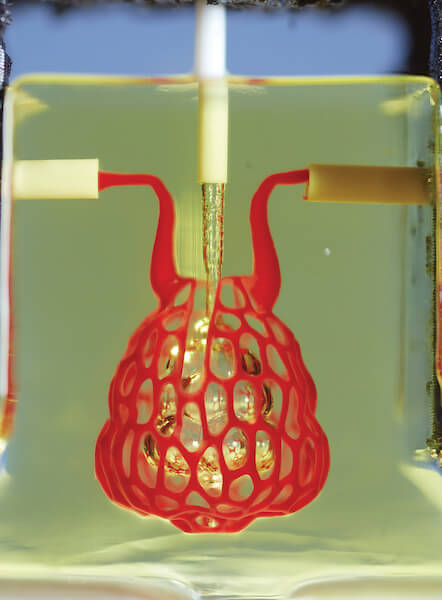
Rice University researchers helped develop a breakthrough bioprinting technique. (Credit: Courtesy photo)
RICE UNIVERSITY
Made breakthrough in 3D printing replacement organs
Rice University bioengineers cleared a major obstacle to 3D printing replacement organs in 2019. In a paper featured on the May 3 cover of Science, Rice assistant professor Jordan Miller, Ph.D., and 15 collaborators from the University of Washington and elsewhere demonstrated a technique for printing living tissues with exquisitely entangled vascular networks. The technique allows engineers to mimic the branching structure of the intricate passageways that transport blood, air, lymph and other vital fluids. Printing these is a challenge because the passages for different fluids are intricate and intertwined, so Miller and colleagues created a new open-source bioprinting technology dubbed the “stereolithography apparatus for tissue engineering,” or SLATE, which makes soft hydrogels one layer at a time. SLATE uses a digital light processing projector and liquids that become solid when exposed to light. A key breakthrough was the addition of light absorbing food dyes that confine solidification to a very fine layer.
• • •
ST. DOMINIC VILLAGE
Elevated standard of care
St. Dominic Village offers the full range of senior care—independent and assisted living, as well as a Rehabilitation and Nursing Center for both short- and long-term nursing needs. The senior care community is in the early phases of capital improvements to its campus. Over the past year, the Rehabilitation and Nursing Center has gone from a 1-star to a 5-star facility, as rated by the Centers for Medicare & Medicaid Services. In addition, St. Dominic Village received a deficiency-free annual survey by the Texas Department of Health and Human Services. This is a testament to the facility’s mission, ‘Caring for Our Elders with the Compassion of Christ.’
• • •
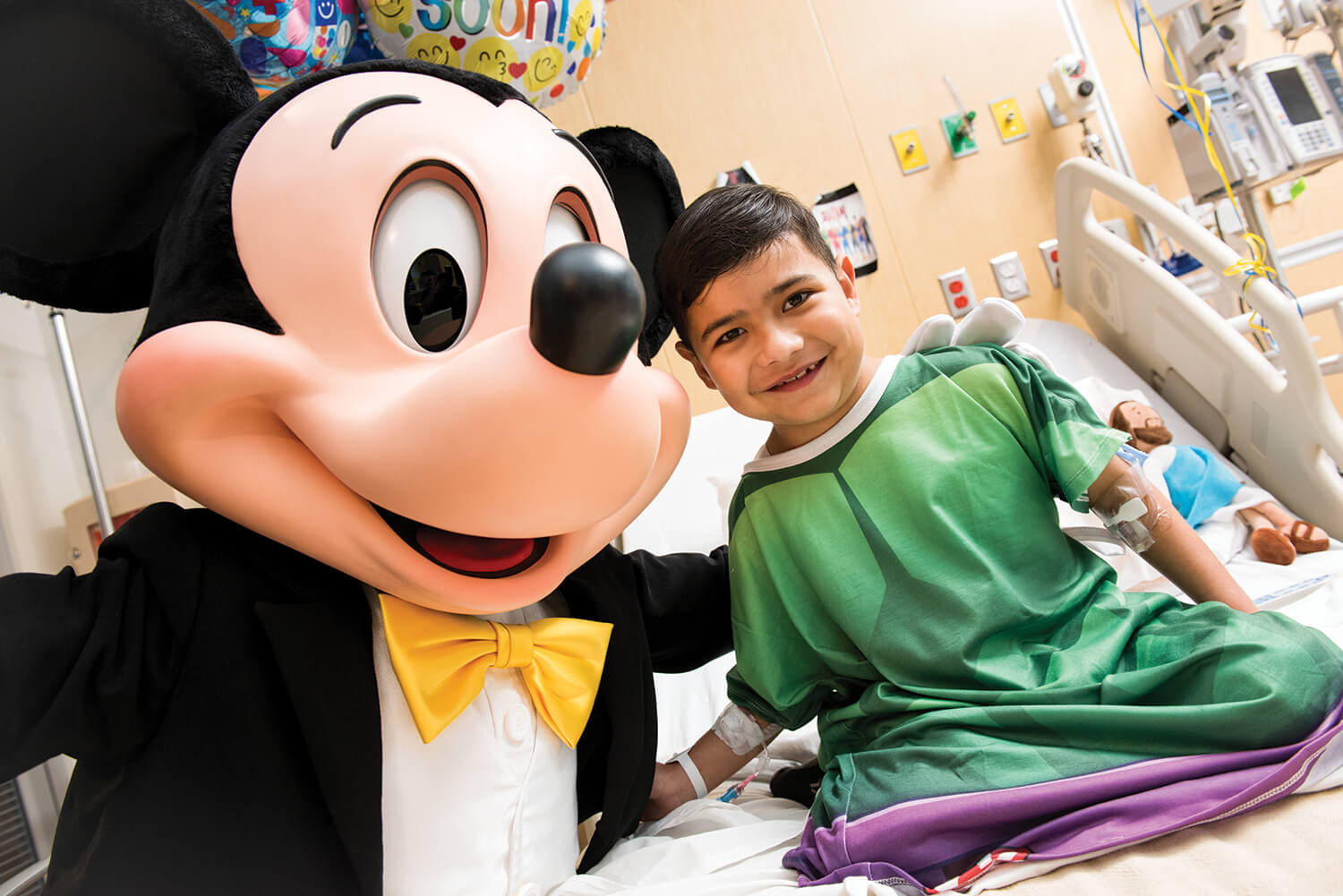
The Walt Disney Company launched the Disney Team of Heroes initiative at Texas Children’s Hospital. (Credit: Vincent Kuntz, Texas Children’s Hospital)
TEXAS CHILDREN’S HOSPITAL
Launched Disney Team of Heroes pilot
The Walt Disney Company celebrated the official launch of the Disney Team of Heroes pilot at Texas Children’s Hospital in April. Texas Children’s is the first hospital to work with Disney on the comprehensive new initiative, which will enhance the patient and family experience at children’s hospitals around the globe through the delivery of comfort and inspiration. Disney’s beloved characters and themes are featured in reimagined spaces, personalized moments and engaging content throughout Texas Children’s. The hospital’s relationship with The Walt Disney Company dates back to 1952, when Walt Disney himself gifted the hospital with an illustration depicting his vision for the hospital’s campus at the time.
• • •
TEXAS HEART INSTITUTE
Advanced arrhythmia research
Texas Heart Institute (THI) is helping translate promising discoveries into clinical practice in collaboration with many members of the Texas Medical Center, industry and other leading institutions. THI teams are testing the first practical total artificial heart, new imaging modalities to detect atherosclerotic vascular disease and developing several heart pacing technologies for treating arrhythmias. This year, the THI electrophysiology clinical research and innovations team, led by Mehdi Razavi, M.D., confirmed that conductive carbon threads made at Rice University could serve as an electrical bypass or bridge to repair the function of the heart. Also, the National Heart, Lung, and Blood Institute—part of the National Institutes of Health—awarded THI’s electrophysiology research team critical funding to pursue the development of wireless, leadless, battery-less pacemakers that will be built with machine learning capabilities to deliver personalized treatments to patients with heart rhythm conditions.
• • •

William F. McKeon, president and
CEO of the Texas Medical Center, left, shakes
hands with Magnus Heunicke, Denmark’s
Minister for Health and Senior Citizens, after
the TMC entered into a BioBridge agreement
with Denmark. (Credit: © Bjørg de Meza Espersen)
TEXAS MEDICAL CENTER
Expanded BioBridge program
BioBridges are major partnerships that align the startup ecosystems of other nations with that of the Texas Medical Center (TMC), accelerating the pace of clinical research by encouraging collaboration between academic researchers here and abroad. In 2016, the TMC established its first BioBridge with Australia. Two years later, a United Kingdom BioBridge was launched. In October 2019, TMC leadership traveled to Copenhagen to announce a third BioBridge partnership—with Denmark. Also in October, the TMC welcomed ABB Robotics, the world’s largest industrial robotics manufacturer, to the TMC Innovation Institute.
• • •
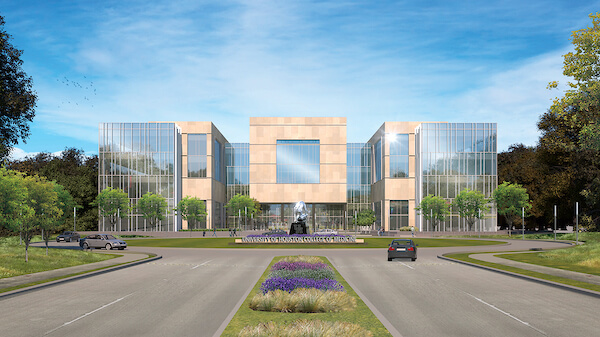
The University of Houston College of Medicine, shown in a rendering, will admit 30 students to its inaugural class. (Credit: Courtesy photo)
THE UNIVERSITY OF TEXAS HEALTH SCIENCE CENTER AT HOUSTON
Received third NIH renewal grant for TMC translational science center
Taking a scientific discovery from bench to bedside is a long, expensive journey. In 2019, the Center for Clinical and Translational Sciences received $37 million in renewed funding from the National Institutes of Health (NIH). Established in 2006 with one of NIH’s inaugural Clinical and Translational Science Awards, the center’s priorities involve improv- ing medical outcomes for all populations, including children, older adults, Hispanics, African Americans and LGBTQ people, all of whom have been historically underrepresented in research. Headquartered at The University of Texas Health Science Center at Houston (UTHealth), the center’s partners include The University of Texas MD Anderson Cancer Center and Rice University in the Texas Medical Center, along with The University of Texas Health Science Center in Tyler, Texas, and The University of Texas Rio Grande Valley.
• • •
UNIVERSITY OF HOUSTON COLLEGE OF MEDICINE
Recognized in state statute
In 2019, Gov. Greg Abbott signed House Bill 826 to recognize The University of Houston College of Medicine in state statute. In addition, architectural renderings of the $80 million medical school building—to be built on the UH campus, across from MacGregor Park—were revealed. The approximately 150,000-square- foot building will include state-of-the-art class- room and meeting spaces, a robust anatomy suite, a full continuum-of-care simulation suite and more. In June, the inaugural group of 39 residents was welcomed to the newly established HCA Houston Healthcare/University of Houston College of Medicine residency program during a white coat ceremony. The partnership aims to bring 155 resident positions to Houston by 2020, with plans for 460 total resident positions by 2025. The UH College of Medicine will admit 30 students to its inaugural class, pending accreditation by the Liaison Committee on Medical Education.
• • •
UNIVERSITY OF ST. THOMAS
Created new positions to emphasize innovation
In 2019, the University of St. Thomas named Beena George, Ph.D., its first chief innovation officer. Even before the appointment, George’s creativity had led to new initiatives, including the Master in Clinical Translation Management (MCTM), a graduate program for business students focused on commercializing biotechnology and collaborating with incubators and accelerators. Co-creator of the MCTM program is Mauro Ferrari, Ph.D., a nanoscience pioneer who joined the university part-time in March as executive vice president of strategic partnerships. A new medical humanities program is under consideration to prepare students for successful medical careers while ultimately improving health care for generations of patients.
• • •
THE UNIVERSITY OF TEXAS MD ANDERSON CANCER CENTER
Boosted survival rates with breast cancer drug
A targeted therapy, when added to hormone therapy, significantly increases survival rates of younger women diagnosed with an advanced stage of the most common type of breast cancer, according to findings from a 2019 MD Anderson Cancer Center study. The study focused on a type of breast cancer fueled by estrogen, which accounts for two-thirds of all cases among women who have not yet gone through menopause. Typically, this type of cancer is treated by therapies that block estrogen’s production. The international clinical trial, called MONALEESA-7, found that adding the drug ribociclib on top of hormone-blocking therapy lowered the risk of death by 29 per- cent. After three-and-a-half years, 70 percent of women were still alive, compared to 46 percent of those who took the hormone treatment only. “This data provides clear evidence that ribociclib offers a significant survival advantage,” said Debu Tripathy, M.D., chair of breast medical oncology and the study’s senior author. “Breast cancer in younger women is known to be more aggressive, so this provides a much-needed treatment option for these patients.”
• • •
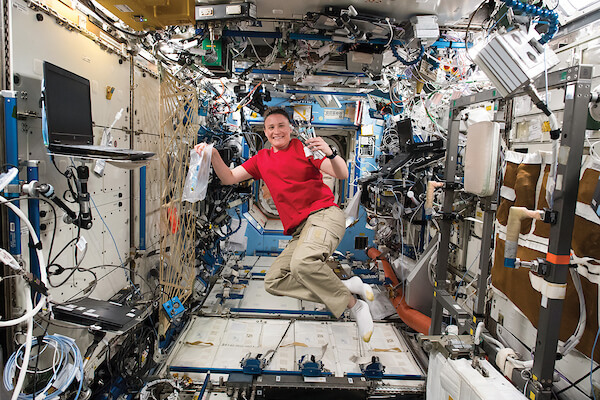
Serena Auñón-Chancellor, M.D., is an astronaut and physician who completed her internal medicine and aerospace medicine residencies at UTMB. (Credit: NASA)
THE UNIVERSITY OF TEXAS MEDICAL BRANCH AT GALVESTON
Identified biomarkers to predict muscle decline in deep space
Prolonged space travel can wreak havoc on the human body, including loss of muscle mass and strength, and no two bodies react the same way to reduced gravity. To help future deep space travelers—headed to Mars and beyond— researchers at The University of Texas Medical Branch at Galveston (UTMB) learned to identify biomarkers that can help predict how susceptible each individual will be to muscle decline and how to combat it. An extended bed rest study allowed scientists to see how the human body would react to different exercise and supplement regimens. With that knowledge, NASA could tailor treatments for individual space travelers before they leave Earth.

